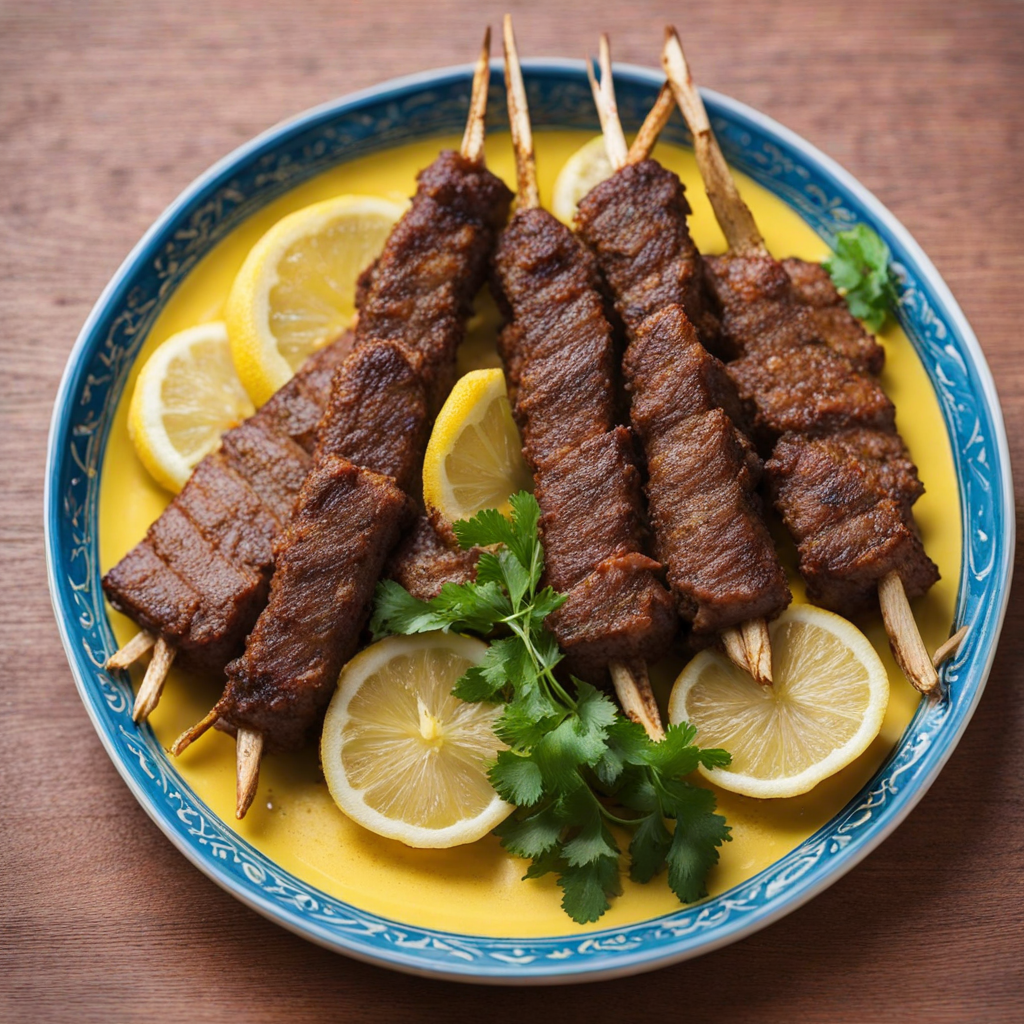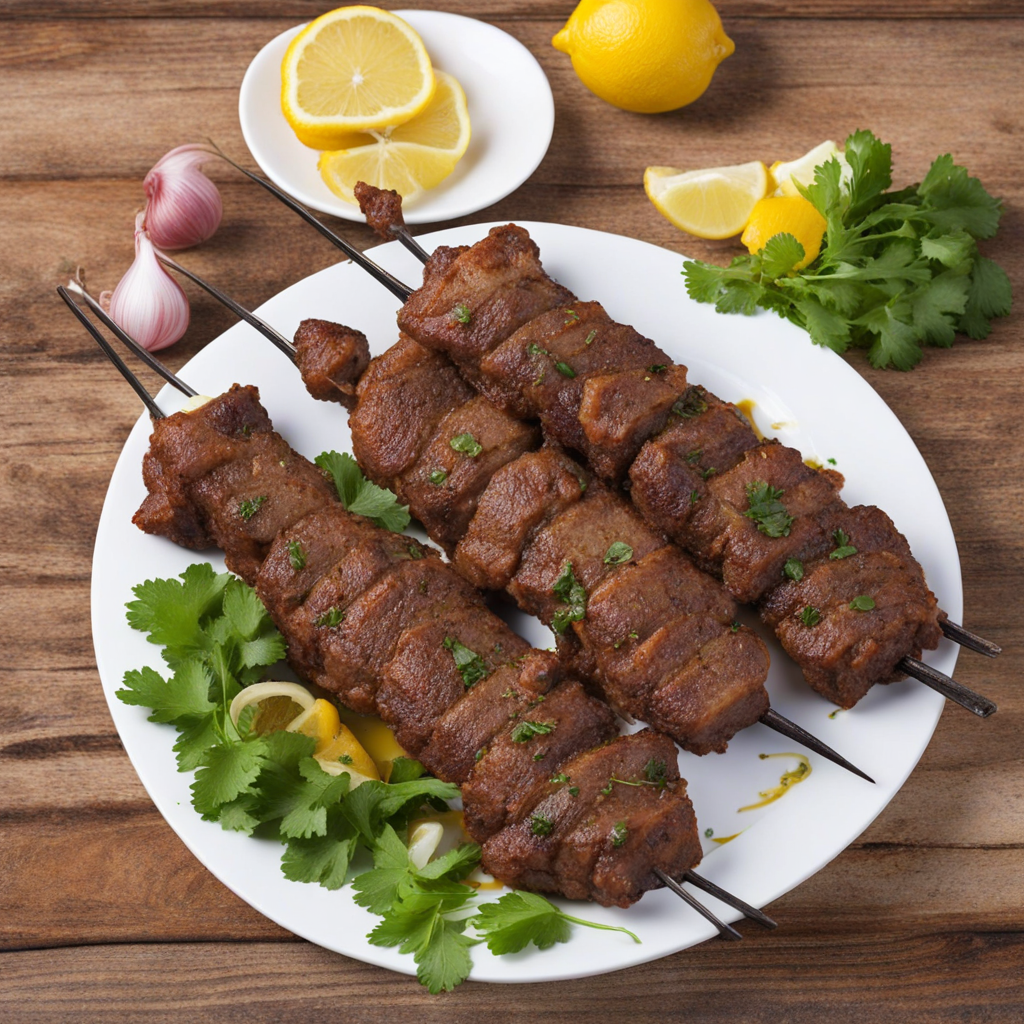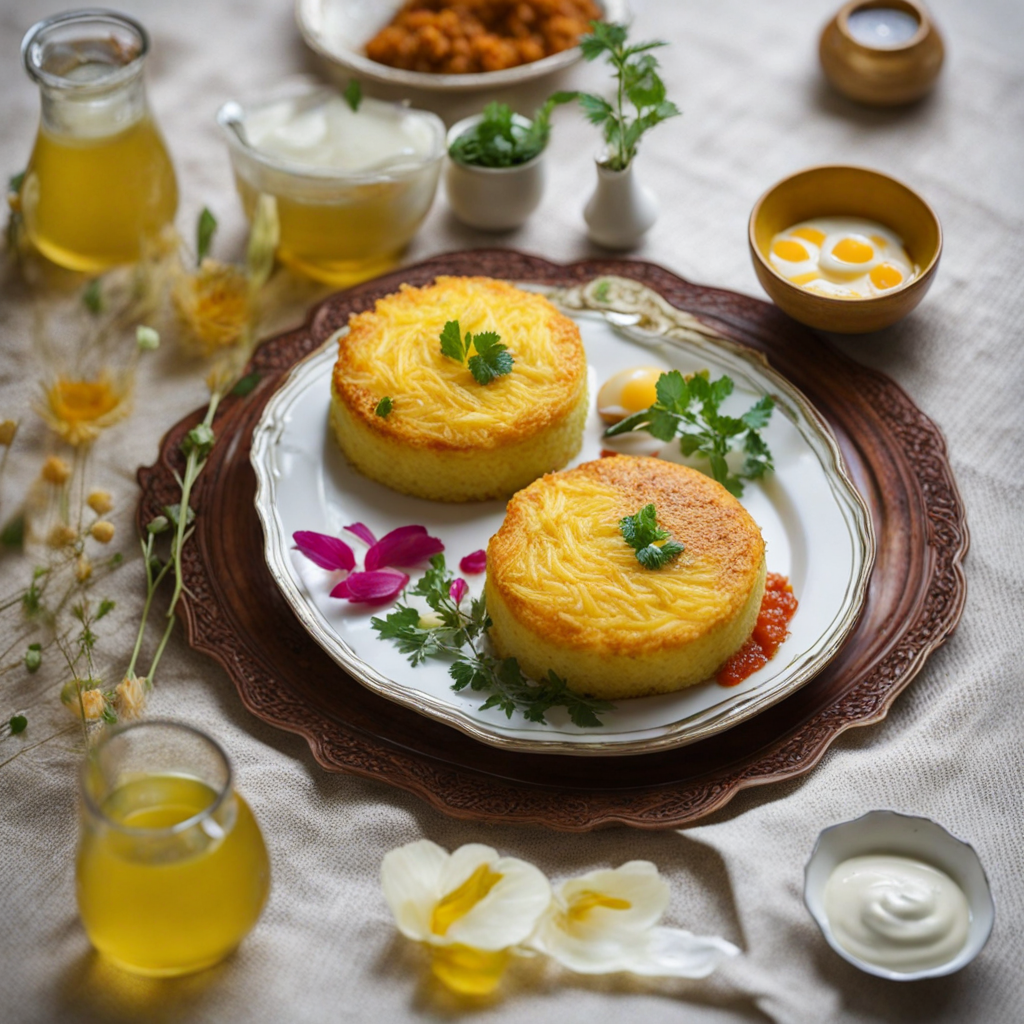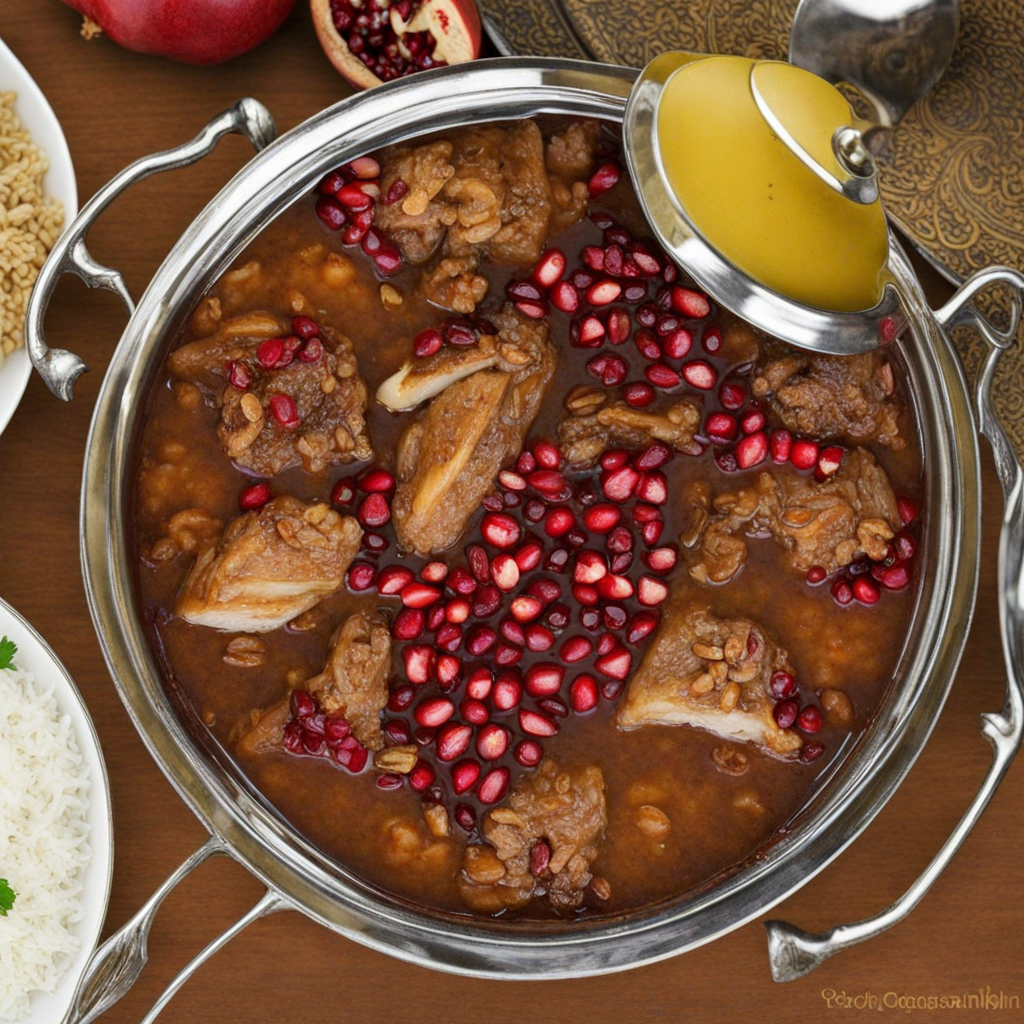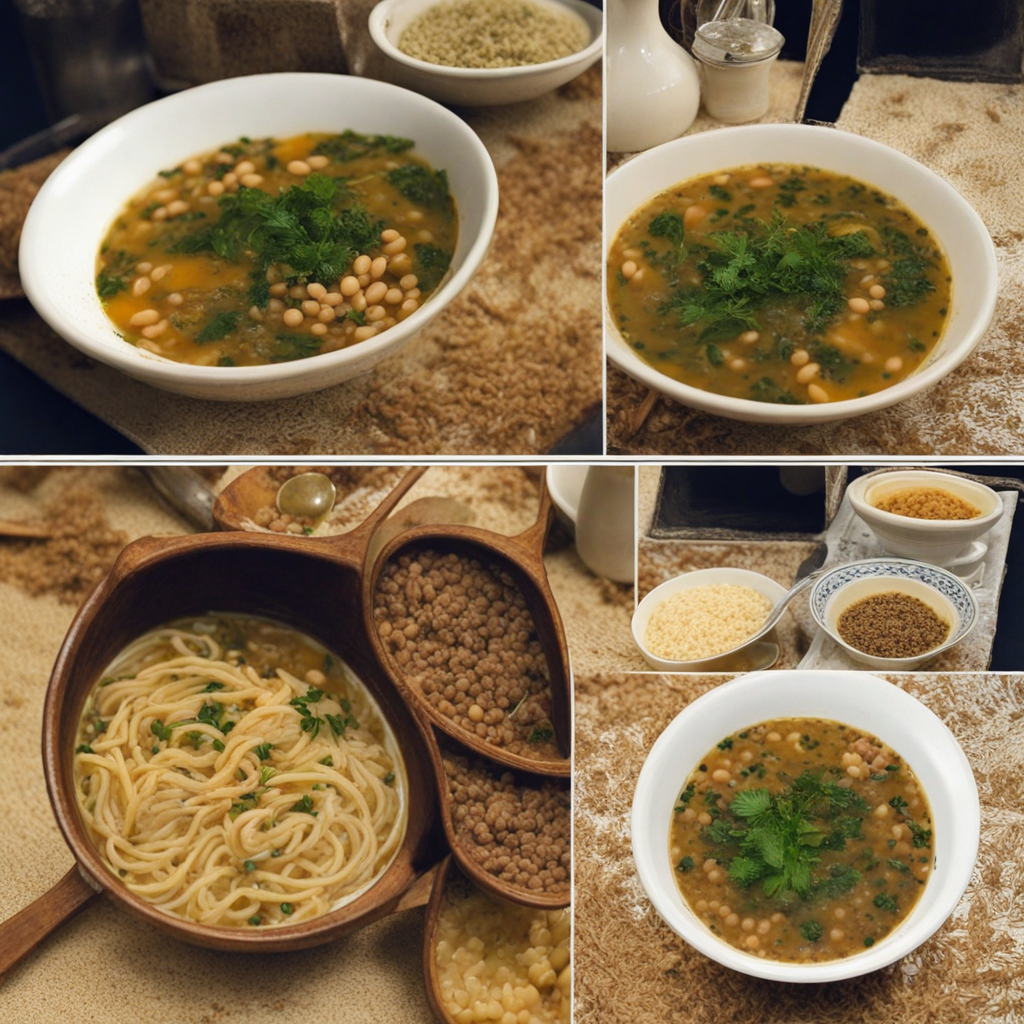Kabab Barg
Kabab Barg is a quintessential Persian dish that showcases the rich flavors and culinary traditions of Iran. This exquisite kebab is made from tender cuts of lamb or beef, marinated in a blend of fragrant spices, fresh herbs, and zesty pomegranate or lemon juice. The marination process allows the meat to absorb the vibrant flavors, resulting in a succulent and juicy kebab that is grilled to perfection over an open flame. The smoky aroma that wafts through the air as the kebabs cook only enhances the anticipation of this delightful dish. The method of preparation is as important as the ingredients themselves. The marinated meat is typically skewered and grilled until it reaches a beautiful char, which adds a delightful contrast to the tender interior. Served alongside saffron-infused rice, grilled tomatoes, and sometimes fresh herbs or flatbread, Kabab Barg offers a delightful combination of textures and flavors. Each bite is a harmonious blend of smoky, savory, and subtly tangy notes that dance on the palate, making it a feast for the senses. Kabab Barg is often enjoyed during gatherings and celebrations, embodying the spirit of hospitality that is a hallmark of Persian culture. Whether enjoyed in a vibrant Persian restaurant or prepared at home, this dish brings people together, encouraging shared meals and storytelling. The experience of savoring Kabab Barg is not just about the taste; it’s also about the warmth and connection that comes from enjoying a beautifully crafted meal with loved ones, making it a truly unforgettable culinary journey.
How It Became This Dish
Origins of کباب برگ کباب برگ, or "kebab barg," is a renowned Iranian dish that exemplifies the rich culinary traditions of Iran. Its roots trace back to ancient Persia, where grilling meats over an open flame was a common practice. The word "kebab" itself derives from the Arabic term "kabab," signifying roasted or grilled meat. Historical texts suggest that the art of grilling meats was established long before the advent of the Persian Empire, with various cultures contributing to the evolution of kebabs throughout the region. The traditional preparation of کباب برگ involves marinating thinly sliced lamb or beef in a mixture of yogurt, onion, and saffron, which tenderizes the meat and infuses it with flavor. The use of yogurt in the marinade is particularly significant; yogurt has been a staple in Persian cuisine for centuries, praised not only for its taste but also for its health benefits. The marinated meat is then skewered and grilled over charcoal, creating a smoky flavor that distinguishes کباب برگ from other types of kebabs. \n Cultural Significance In Iranian culture, کباب برگ holds a special place in both everyday meals and festive celebrations. It is commonly served during family gatherings, weddings, and other significant events, symbolizing hospitality and the joy of sharing food with loved ones. The dish is often accompanied by rice, specifically saffron-infused Persian rice known as "polow," along with grilled tomatoes and fresh herbs, enhancing the overall dining experience. Moreover, کباب برگ is more than just a meal; it serves as a cultural icon that reflects the values and traditions of Iranian society. The act of grilling kebabs is often associated with leisurely gatherings, where friends and family come together to share stories and enjoy each other's company. The dish is also a representation of Persian craftsmanship, showcasing the skill required in selecting high-quality ingredients and mastering the grilling technique. \n Development Over Time As Iran's culinary landscape evolved, so too did کباب برگ. Historical influences, such as the Mongol invasions and the subsequent establishment of the Safavid Empire, brought new flavors and techniques to Persian cuisine. The mingling of cultures contributed to the refinement of grilling practices, leading to variations of کباب برگ that included different marinades and preparation methods. During the Qajar dynasty in the 19th century, the popularity of کباب برگ surged, especially among the aristocracy. The dish became synonymous with luxury and sophistication, often featured in lavish feasts and banquets. This era saw the introduction of elaborate recipes that combined traditional Persian spices with new culinary influences from Europe and the Middle East, further enriching the flavor profile of کباب برگ. In contemporary times, کباب برگ has remained a beloved dish, both within Iran and among the Iranian diaspora worldwide. Its popularity has transcended geographical boundaries, leading to the emergence of Persian restaurants that serve authentic versions of this dish. Culinary enthusiasts often experiment with various ingredients and grilling techniques, creating innovative interpretations while respecting the traditional roots of کباب برگ. \n Regional Variations Throughout Iran, distinct regional variations of کباب برگ can be found, reflecting local ingredients and culinary customs. For instance, in the northern provinces, where lamb is more prevalent, the kebabs are often prepared with tender cuts of meat marinated in a blend of local herbs and spices. In contrast, in the southern regions, where beef is more commonly used, the kebabs may feature a spicier marinade that incorporates chili peppers and other bold flavors. Additionally, the method of grilling can vary significantly. While traditional کباب برگ is typically cooked over charcoal, some regions may opt for cooking on a flat iron griddle or even in tandoors, a type of clay oven. These variations not only highlight the diversity of Iranian cuisine but also emphasize the adaptability of کباب برگ to different cooking methods and regional palates. \n Modern Popularity and Global Influence In recent years, کباب برگ has gained international recognition, becoming a staple in Persian restaurants around the globe. The dish's appeal lies in its simplicity and the rich flavors that arise from the marination and grilling process. As global interest in Middle Eastern cuisine continues to grow, کباب برگ has found its way onto the menus of many fusion restaurants, often served alongside other traditional dishes. Social media has played a significant role in the global spread of کباب برگ, with food bloggers and culinary influencers showcasing their own takes on this classic dish. This exposure has not only introduced new audiences to the flavors of Persian cuisine but has also sparked conversations about the importance of food as a means of cultural exchange. As people become more adventurous in their culinary explorations, کباب برگ serves as an accessible entry point into the world of Iranian cuisine, inviting diners to experience the rich flavors and traditions that have been passed down through generations. \n Conclusion: A Culinary Heritage Ultimately, کباب برگ is much more than just a grilled meat dish; it is a symbol of Iran's rich culinary heritage and the social bonds that food creates. From its ancient origins to its modern interpretations, کباب برگ captures the essence of Persian hospitality and the artistry of cooking. As it continues to evolve and adapt, this beloved dish remains a testament to the enduring legacy of Iranian cuisine and its ability to bring people together across cultures and generations.
You may like
Discover local flavors from Iran


